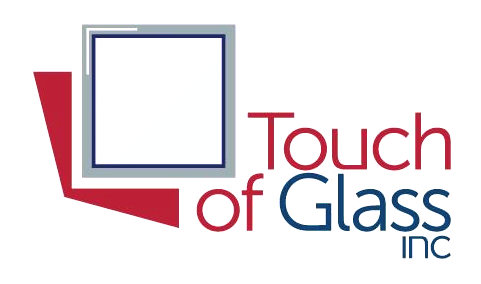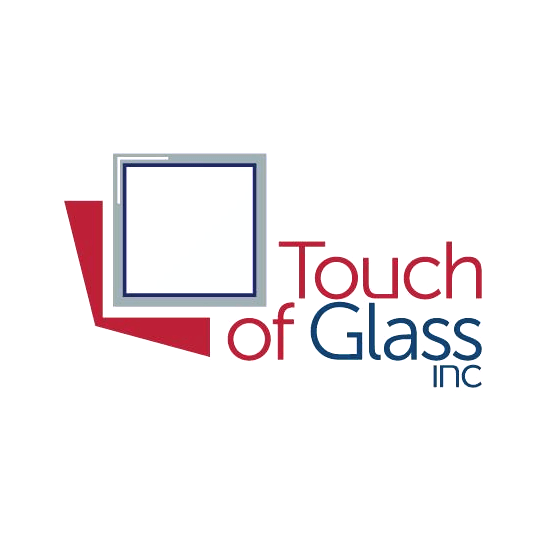Heat treatment in glass is used to produce tempered glass. Tempered glass is a safety glass used widely in the residential and commercial markets. It is much stronger than annealed glass and breaks in a much safer manner. However the manufacturing process can impart some visible distortion to the product. A certain element of visual distortions in glass are accepted in glass manufacturing. Tempered glasses such as that used in shower enclosures and some windows, go through additional manufacturing processes which can change the visual appearance of the glazing.
Damaged glass is always classed as unacceptable and will not be installed on site, however, there are a few types of visual distortions in glass that are well documented and accepted as a natural element of processed glass.
We, at A Touch of Glass, closely follow all glass industry standards when checking in materials and before installation. It is important to note all of the characteristics listed about, are a characteristic of heat treated (tempered) glass and are not considered a defect. These characteristics can be intensified by the light conditions that they are subjected to as well as show up temporarily after using the shower, while the glass is wet. They cannot be removed and are inherent in the production of all glass.
Anisotropy (or Strain Pattern)
Anisotropy (also called strain pattern) can be seen in some tempered glass panels under polarised light. It is caused by the different layers of ‘stress’ or tension within the thickness of a tempered glass unit. When polarised light passes through these areas of the glass it can appear as an iridescent or coloured pattern on the surface of the glass.
As polarised light is present within normal daylight, Anisotropy may be visually apparent at certain times of day or under certain lighting conditions. This type of visual distortions in glass is often more apparent when the glass is viewed in a slanted manner or when glass is installed at right angles to each other.
Anisotropy is an accepted characteristic of the glass toughening process and is not classed as a glass defect.
Roller Wave/ Orange Peel/ Heat Marks
Roller Wave is a common type of visual distortions in glass that may be visible in toughened glass units. It is caused during the glass tempering process when the heated and slightly molten glass is passed over large rollers whilst it is cooled. As a result, the glass may have a slightly waved finish to the surface.
This does not affect the strength of durability of the tempered glass. These marks are typically only visually detectable under certain circumstances and conditions. These are seen many times when looking at glass from a certain angle and cannot be seen looking from a different angle.
As a rule, the visual appearance of Roller Wave is not classed as a glass defect in shower enclosure and insulated glass unit installation. Orange Peel is an imprint left on the glass from the furnace roller.
Heat Marks can be found in flat heat treated glass products. The heat treating process will cause certain small marks on the glass surface. They are very similar to fine salt grains and they usually will show when viewing the glass at an angle and/or against a bright background. They are more visible in thicker and larger pieces of glass.
Iridescence:
A Strain pattern also known as iridescence is inherent in all heat-strengthened and full tempered glass. This strain pattern may become visible under certain lighting conditions. It is a characteristic of heat treated glass and should not be mistaken as discoloration, distortion or a defect in the glass. The strain pattern does not affect any physical properties or performance values of the glass.

